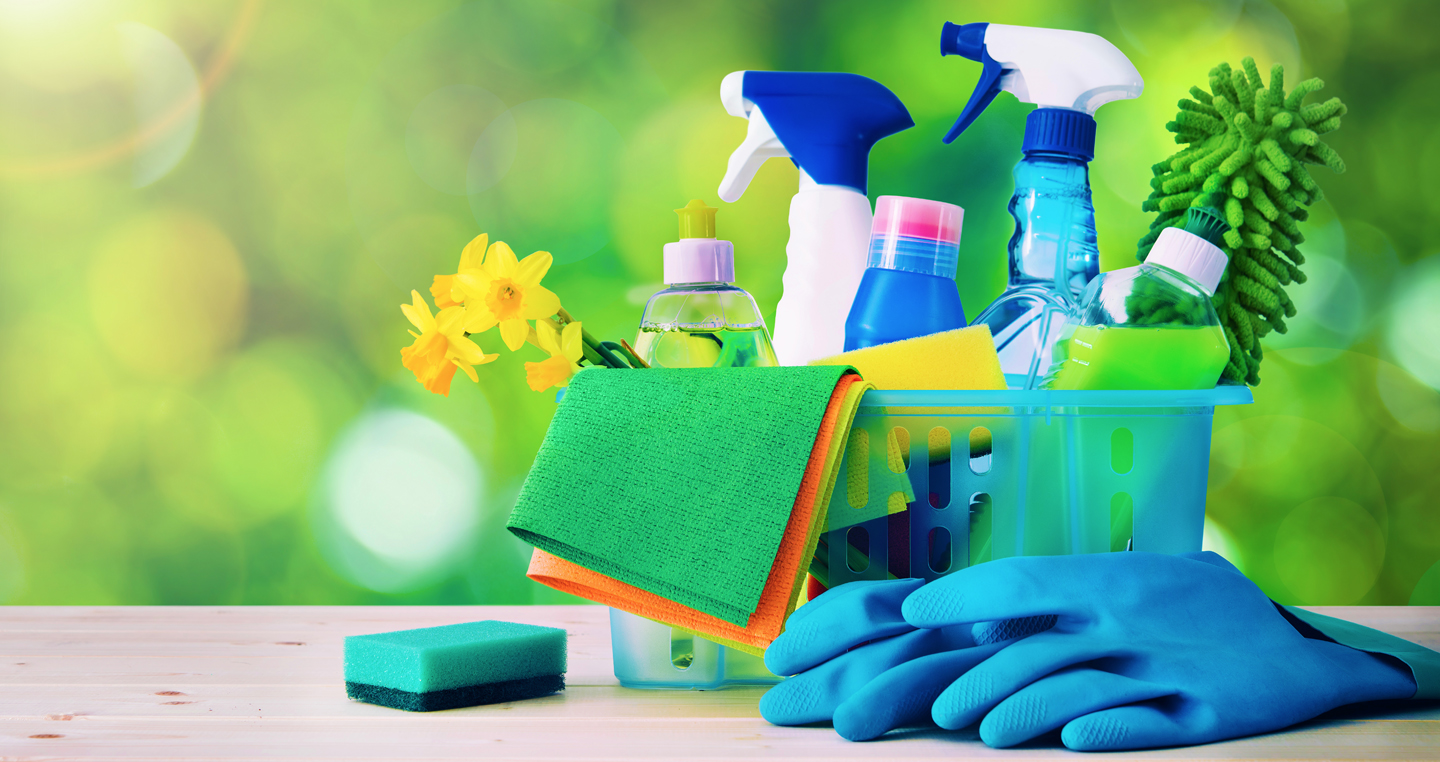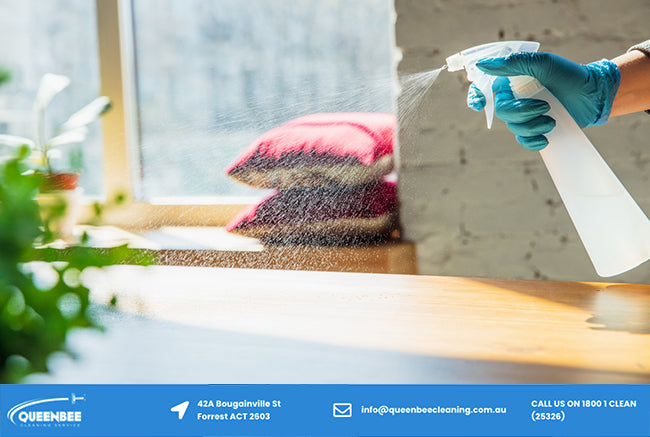Understanding the Need for Extensively Disinfecting and Disinfecting Regularly Touched Surfaces in High-Traffic Locations
In the world of public wellness and safety and security, the meticulous disinfection and sanitization of regularly touched surface areas in high-traffic areas stand as vital measures in avoiding the spread of unsafe virus. By discovering the numerous aspects of surface sanitation, from the threats linked with neglecting cleaning protocols to the efficient approaches that can be utilized, a more clear understanding emerges of the vital function these practices play in safeguarding public health.
Significance of Surface Area Sanitation
Emphasizing the extensive disinfection of high-traffic surfaces is vital in keeping a hygienic atmosphere and avoiding the spread of hazardous pathogens. High-touch surface areas such as door handles, light switches, elevator buttons, and kitchen counters function as reproducing grounds for infections and microorganisms. Regular sanitation of these surfaces is necessary to lower the threat of contamination and transmission of health problems.
By carrying out a robust disinfection procedure, services and organizations can develop a safer environment for staff members, visitors, and clients. Correct surface area sanitation not just minimizes the spread of infectious conditions but also instills self-confidence in the tidiness and security of the premises. This proactive method demonstrates a dedication to health and wellness, which is specifically vital in high-traffic areas where the possibility of direct exposure to microorganisms is increased.
Additionally, surface sanitation plays a crucial function in general infection control strategies. Combined with hand hygiene techniques, putting on masks, and keeping physical distancing, complete disinfection of high-touch surface areas develops a thorough defense versus the transmission of hazardous microbes. Prioritizing surface sanitation is a crucial component of an alternative approach to health and wellness and security in common spaces.
Threats of Ignoring Cleansing Practices
Ignoring detailed sanitation of high-traffic surface areas significantly heightens the risk of microbial and viral contamination, posing a major risk to the health and wellness of individuals often visiting these areas. Failure to execute proper cleansing techniques can result in the accumulation and spread of dangerous pathogens, consisting of germs and infections, on frequently touched surfaces such as doorknobs, hand rails, elevator buttons, and countertops.

Additionally, disregarding the relevance of thorough cleaning not just jeopardizes the wellness of individuals yet likewise threatens initiatives to keep a sanitary and tidy setting. It is critical to acknowledge the value of proper sanitation methods in protecting against the spread of infections and safeguarding public wellness.
Efficient Sanitation Approaches
To preserve optimal sanitation and decrease the threat of contamination on high-traffic surfaces, employing effective sanitation methods is important. One of the most usual and efficient disinfection approaches is making use of chemical anti-bacterials. These items can vary in toughness and composition, with some targeting specific pathogens like viruses or microorganisms. It is vital to comply with the maker's directions for proper dilution, call time, and ventilation when making use of chemical anti-bacterials to ensure their performance - defrosted and cleaned every few months.
An additional efficient method is the usage of Get the facts UV-C light. UV-C light has actually been revealed to be efficient in eliminating a broad variety look what i found of bacteria by disrupting their DNA framework, hence avoiding them from replicating. Nonetheless, it is essential to make use of UV-C light appropriately, making sure that the right intensity and exposure time are used to achieve the desired sanitation outcomes.
In addition, using heavy steam cleaning as a disinfection method can be extremely reliable, specifically on surface areas that are heat-resistant. Steam can penetrate porous surface areas and eliminate germs, infections, and other microorganisms efficiently. When using vapor cleaning, it is very important to guarantee that the surface area reaches the needed temperature level for an adequate amount of time to guarantee correct disinfection.
Influence On Public Health
The upkeep of high criteria of cleanliness and sanitation on high-traffic surface areas plays an essential duty in guarding public health and wellness. Often touched surface areas in areas with high tramp, such as doorknobs, hand rails, elevator switches, and restroom facilities, offer as breeding premises for damaging microorganisms.
In high-traffic locations like flight terminals, institutions, hospitals, and public transportation systems, the impact of strenuous sanitation procedures can not be downplayed. Prioritizing the sanitization of frequently touched surface areas is a positive technique to promoting public health and wellness and improving the safety of people in shared spaces.
Executing Normal Cleaning Methods
Without delay setting up and adhering to a regular timetable of cleaning methods is critical for keeping the cleanliness and security of high-traffic surface areas. Routine cleaning methods are vital in preventing the build-up of germs and pathogens on frequently touched surface areas, especially in locations with high foot traffic. By implementing a methodical method to cleaning, organizations can effectively decrease the threat of condition transmission and produce a healthier atmosphere for staff members, consumers, and the general public.
To develop a reliable cleansing timetable, it is essential to recognize high-traffic areas that need frequent attention. These areas may consist of doorknobs, handrails, elevator buttons, bathroom facilities, and shared tools. Carrying out a routine cleansing regimen that targets these surfaces multiple times a day can dramatically reduce the spread of harmful microorganisms and viruses.
Additionally, making use of appropriate cleaner and anti-bacterials is essential to making certain that surface areas are thoroughly disinfected. Routine training of cleaning team on correct cleaning methods and the importance of adherence to the cleansing timetable is likewise essential in maintaining a sanitary environment. By focusing on regular cleaning procedures, companies can advertise the wellness and well-being of individuals who interact with these high-traffic surface areas.

Verdict
In final thought, it is vital to prioritize detailed Check This Out disinfection and sanitization of frequently touched surface areas in high-traffic locations to avoid the spread of dangerous virus and preserve public wellness. Neglecting proper cleansing techniques can enhance the danger of contamination and transmission of diseases. By implementing routine cleaning methods and using effective sanitation techniques, we can produce a much safer environment for every person (defrosted and cleaned every few months). It is imperative to recognize the importance of keeping tidy surface areas in high-traffic areas to ensure the health of the area.
In the world of public wellness and safety and security, the thorough disinfection and sanitization of frequently touched surface areas in high-traffic locations stand as paramount procedures in stopping the spread of unsafe virus. By discovering the numerous elements of surface disinfection, from the dangers connected with neglecting cleansing procedures to the effective techniques that can be employed, a clearer understanding emerges of the essential role these practices play in guarding public health.Additionally, utilizing heavy steam cleansing as a disinfection method can be highly reliable, specifically on surfaces that are heat-resistant. When using steam cleaning, it is essential to guarantee that the surface gets to the required temperature for an adequate quantity of time to assure proper disinfection.
In final thought, it is essential to focus on complete sanitation and sanitization of regularly touched surface areas in high-traffic areas to stop the spread of damaging pathogens and maintain public health and wellness.